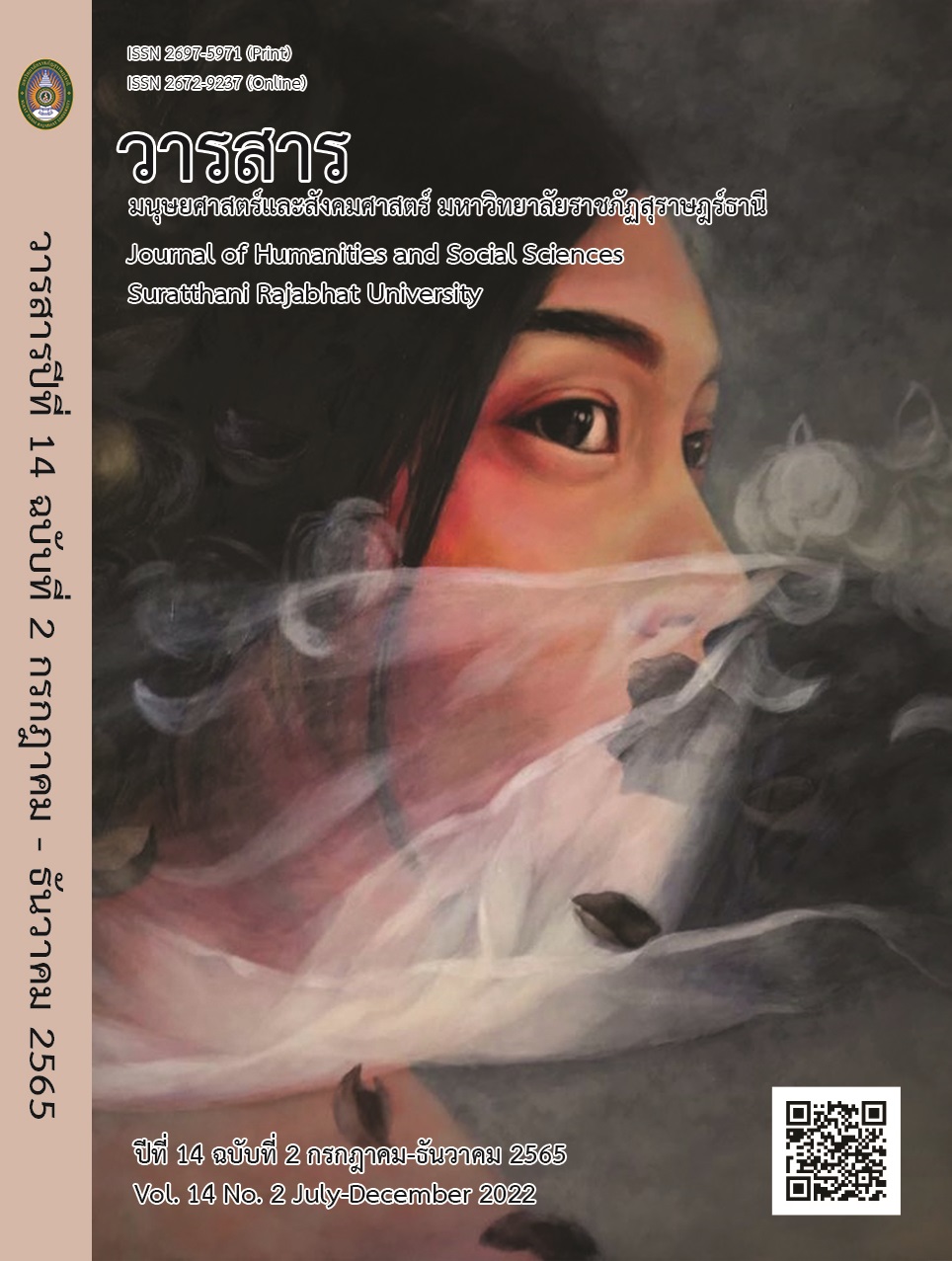Becoming a Better Reader in English: A Closer Look at Some Foundational Reading Components
Main Article Content
Abstract
In today’s digital world, reading in English is one of the most crucial skills in our everyday lives. Due to the tremendous sources of information provided by the Internet, we need to read not only in our own language but also in English for effective communication. However, many people like Thai learners are still struggling in English reading comprehension in spite of the fact that they have been doing it for many years. This article presents what essential components are involved in order to make them read much better. The detailed concepts of vocabulary knowledge, fluency in reading, and reading strategies, as well as recommendations for tackling the reading problems are investigated and addressed.
Article Details

This work is licensed under a Creative Commons Attribution-NonCommercial-NoDerivatives 4.0 International License.
All published manuscripts have been verified by peer-peer professors in the fields of humanities and social sciences. Reprinting of the article must be authorized by the editorial staff.
References
Alderson, J. C. (2000). Assessing Reading. Cambridge: Cambridge University
Press.
Ammaralikit, A. & Chattiwat, W. (2020). Effects of business reading model on
Thai Learners’ reading and creative thinking abilities. English
Language Teaching, 13(5), 191-208.
Anderson, N.J. (1991). Individual differences in strategy use in second language
reading and testing. Modern Language Journal, 75(4), 460-472. http://
dx.doi.org/10.1111/j.1540-4781.1991.tb05384.x/abstract
Anderson, N.J. (1999). Exploring Second Language Reading: Issues and Strategies.
Toronto: Heinle & Heinle Publishers.
Anderson, N. J. (2003). Teaching reading. In D. Nunan (Ed.). Practical English
Language Teaching (pp.67-86). New York: McGraw Hill Publishers.
Bell, J. (2011). Reading matters: Framing and metacognition with Thai
postgraduate students. The Reading Matrix, 11(2), 102-115. http://
www. readingmatrix.com/ articles/april_2011/bell.pdf
Boutorwick,Tj., Macalister, J, & Elgort,I. (2019). Two approaches to extensive
reading and their effects on L2 vocabulary development. Reading in
a Foreign Language, 31(2), 150-172.
Brown, A. L. (1989). A Practical Guide to Language Learning. New York: Mc
Graw-Hill.
Chung, M. & Nation, I.S.P. (2006). The effect of a speed reading course. English
Teaching, 61(4), 181-204.
Coxhead, A. (1998). An academic word list. English Language Institute Occasional
Publication No. 18). Wellington, New Zealand: School of Linguistics
and Applied Language Studies, Victoria University of Wellington.
Coxhead, A. (2000). A new academic word list. TESOL Quarterly, 34(2), 213-
Geva, E. & Ramirez, G. (2015). Focus on Reading. Oxford: Oxford University
Press.
Grabe, W. (1991). Current developments in second language reading
research. TESOL Quarterly, 25(3), 375-406.
Grabe, W. (2009). Reading in a Second Language: Moving from Theory to
Practice. Cambridge: Cambridge University Press.
Grabe, W. (2010). Fluency in reading- Thirty-five years later. Reading in a
Foreign Language, 22(1), 71-83.
Hawes, C. (2014). Self-Access at SRU – Towards an Effective Model. Journal
of Humanities and Social Sciences, Suratthani Rajabhat University,
(2),119-136.
Kennedy, O. (2020). An Interview with Professor Paul Nation. The Language
Teacher, 44(1), 23-26.
Laufer, B. & Ravenhorst-Kalovski, G.C. (2010). Lexical threshold revisited: Lexical
text coverage, learners’ vocabulary size and reading comprehension.
Reading in a Foreign Language, 22(1), 15-30.
Lekwilai, P. (2014). Reader’s theater: An alternative tool to develop reading
fluency among Thai EFL learners. Pasaa, 48(2), 89-111.
Lui, N, & Nation, I.S.P. (1985). Factors affecting guessing vocabulary in context.
RELC Journal, 16(1), 33-42.
Meara, P. (1995). The importance of an early emphasis on L2 vocabulary. The
Language Teacher, 19(2), 8-11.
Millett, S. (2017). Speed readings for ESL learners, 3000 BNC. English Language
Institute Occasional Publication No. 26. Wellington, New Zealand:
School of Linguistics and Applied Language Studies, Victoria University
of Wellington.
Nation, I. S. P. (1984). Vocabulary lists. English Language Institute Occasional
Publication No. 12. Wellington, New Zealand: School of Linguistics
and Applied Language Studies, Victoria University of Wellington.
Nation, I.S.P. (1990). Teaching and Learning Vocabulary. Massachusetts:
Heinle & Heinle Publishers.
Nation, I.S.P. (2001). Learning Vocabulary in Another language. Cambridge:
Cambridge University Press.
Nation, I. S. P. (2005). Reading faster. PASAA, 36(4), 21–35.
Nation, I.S.P. (2014). How much input do you need to learn the most
frequent 9000 words?. Reading in a Foreign Language, 26(2), 1-16.
Nation, I.S.P. (2015). Principles guiding vocabulary learning through extensive
reading. Reading in a Foreign Language, 27(1), 136-145.
Nuttall, C. (1982). Teaching Reading Skills in a Foreign Language. London:
Heinemann.
Nuttall, C. (1996). Teaching Reading Skills in a Foreign Language. Oxford:
Macmillan Publishers Limited.
O’Mally, J. M. & Chamot, A. U. (1990). Learning Strategies in Second Language
Acquisition. Cambridge: Cambridge University Press.
Oxford, R. (1989). Use of language learning strategies: A syntheses of studies
with implications for strategy training. System, 17(2), 235-247.
Oxford, R. (1990). Language Learning Strategies: What Every Teacher Should
Know. Massachusetts: Heinle & Heinle Publishers.
Quinn, E., & Nation, I. S. P. (1974). Asian and Pacific speed readings for ESL
learners, (ELI Occasional Publication No 24). Wellington, New
Zealand: School of Linguistics and Applied Language Studies,
Victoria University of Wellington.
Schmitt, N. (2000). Vocabulary in Language Teaching. Cambridge: Cambridge
University Press.
Taguchi, E., M. Takayasu-Maass, GJ. Gorsuch. (2004). Developing reading
fluency in EFL: How assisted repeated reading and extensive reading
affect fluency development. Reading in a Foreign Language, 16(2),
-96.
Urquhart, S. & Weir, C. (Eds.). (1998). Reading in a foreign language: process,
product and practice. Harlow: Longman.
W3Techs – World wide web technology surveys: Content languages. (2020).
Wenden, A. L. (2002). Learner development in language learning. Applied
Linguistics, 23(1), 32-55. https://doi.org/10.1093/applin/23.1.32
West, M. (1953). A General Service List of English Words. London: Longman.
Wilkins, D.A. (1972). Linguistics in Language Teaching. London: Edward
Arnold.
Yimwilai, S. (2008). English reading abilities and problems of English-major
students in Srinakharinwirot University. Journal of Humanities and
Social Sciences, 4(1), 30-148.


